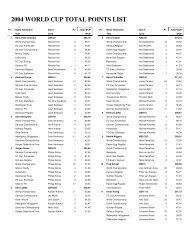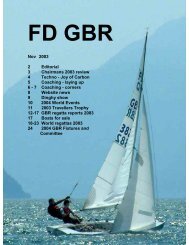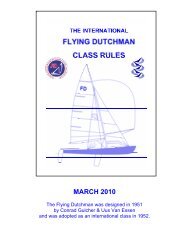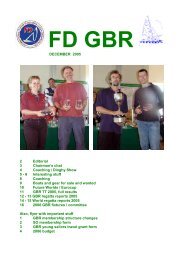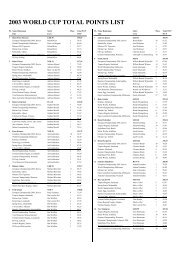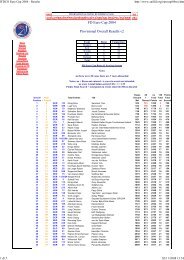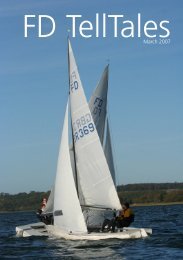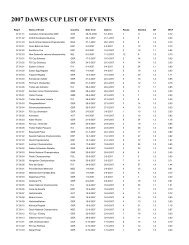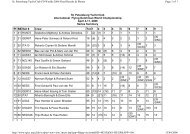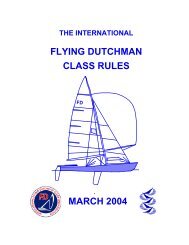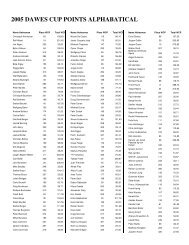A5 version - International Flying Dutchman Class
A5 version - International Flying Dutchman Class
A5 version - International Flying Dutchman Class
Create successful ePaper yourself
Turn your PDF publications into a flip-book with our unique Google optimized e-Paper software.
INTERNATIONAL FLYING DUTCHMAN CLASS RULES 2007 17<br />
stretched along the mast and attached at a point 2500 mm above the<br />
top of the Limit mark (band) number 1. Those parts of the rigging<br />
below this point may be supported. When a knife-edge at 2500 mm<br />
above band 1 supports the mast it must tip, Top point down.<br />
59. The mast must have openings near the top and the heel to allow<br />
the mast to drain. The sum of the areas of the openings at the top<br />
and at the heel must not be less than a minimum of 150 mm 2 .<br />
60. Mast Spar Cross-Section, including the sail track or its<br />
extension, for the sections:<br />
Minimum Maximum<br />
1) From the heel to the limit point No 4, fore and aft 70mm 100mm<br />
2) From the heel to the limit point No 4, transverse 50 mm 100mm<br />
3) At the upper point, fore and aft 35 mm 55 mm<br />
4) At the upper point, transverse 30 mm 50 mm<br />
With proportional limitations at intermediate stations of the mast<br />
between the limit point No 4 and the upper point.<br />
61. Mast Position: A stop must be fitted at the mast step to prevent<br />
the “mast heel measurement point” from being moved aft of a point<br />
perpendicularly down from the deck line and 3600 mm from the<br />
transom, as measured along the deck line. The mast heel must be<br />
on the centreline. Slides or carriages on the mast heel track are<br />
prohibited. (See diagram)<br />
62. Mast Rigging: Runners, running backstays and rigid forestays<br />
are prohibited, and only a single centreline adjustable backstay is<br />
allowed. The shrouds must be installed such that movement of their<br />
lower ends is impossible while racing. A flexible or solid babystay, if<br />
fitted, must not be attached higher than the Lower point, i.e. the<br />
upper edge of band number 2 (see Rule 68).<br />
63. A forestay, of minimum diameter 2 mm, and of material of<br />
strength equivalent to stainless steel wire, must be rigged. The<br />
position of the forestay must be forward of the luff of the jib and<br />
approximately on the centre line, see ISAF RRS 54. The forestay<br />
must be independent of the jib, and must support the mast when the<br />
jib is lowered, or the jib halyard or tack is broken in a strong wind.



